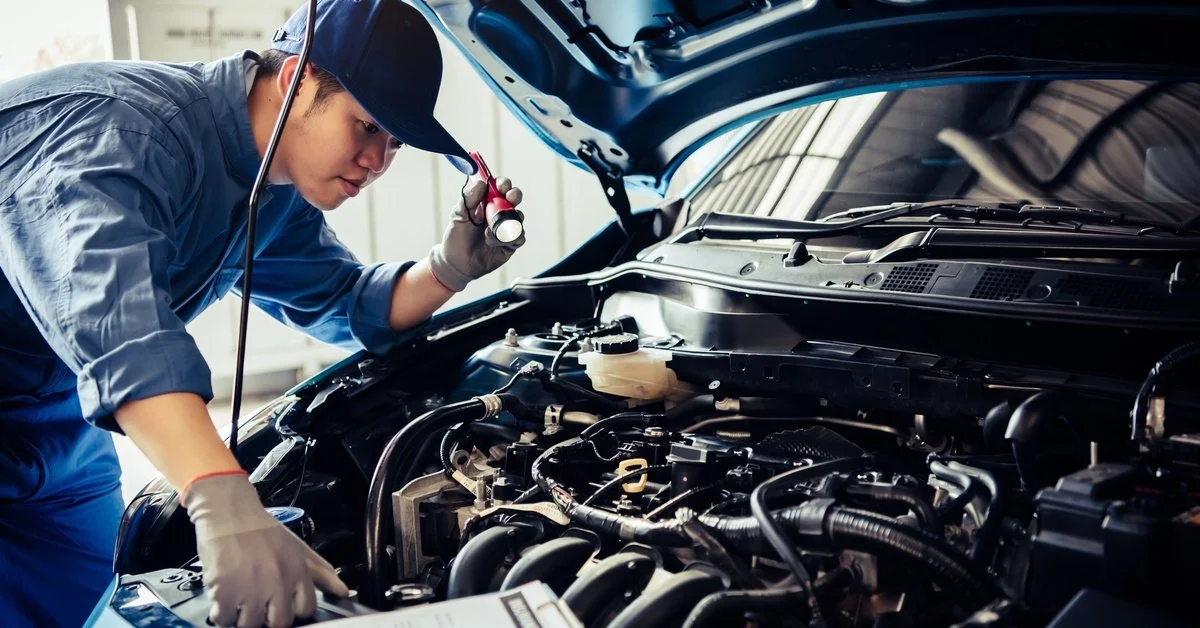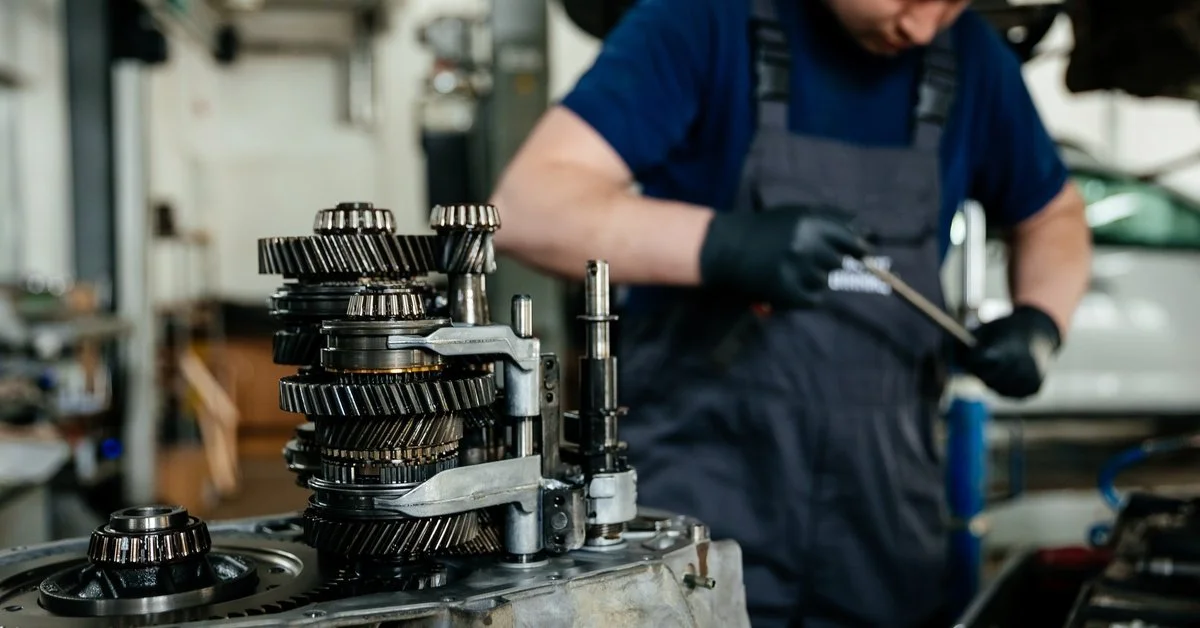10 Transmission Maintenance Mistakes You Should Stop Making
Your vehicle’s transmission is one of its most critical components. Proper transmission maintenance enhances your car’s performance and extends its lifespan, saving you from costly repairs down the road. However, many drivers unknowingly make mistakes that put unnecessary strain on their transmission systems.
This blog will highlight the ten most common transmission maintenance mistakes you should stop making, so you’ll have a clear understanding of how to keep your vehicle running smoothly.
What a Transmission Is and How It Degrades Over Time
The transmission is responsible for transferring power from your vehicle’s engine to its wheels. It ensures that your car runs smoothly at various speeds by shifting gears. With continuous use, the transmission experiences wear and tear from heat, friction, and contamination.
Over time, improper maintenance can lead to fluid degradation, clogged filters, and damaged components, all of which can result in costly repairs or total transmission failure. Understanding how the transmission works and caring for it effectively is critical to preserving the health of your vehicle.
Mistake 1: Ignoring Fluid Leaks
One of the most common and detrimental mistakes car owners make is ignoring transmission fluid leaks. Transmission fluid is essential for lubricating and cooling the transmission’s moving parts, ensuring smooth operation.
A leak can lower fluid levels, leading to overheating, increased friction, and eventual component failure. Signs of a fluid leak include red or brown puddles under your vehicle or difficulty shifting gears. Addressing leaks promptly and checking fluid levels regularly can prevent significant damage and save you from expensive repairs down the line.
Mistake 2: Neglecting Regular Fluid Checks
Regular fluid checks are a critical part of transmission maintenance that many vehicle owners overlook. Ignoring routine checks can result in undetected issues from low fluid levels or contamination, which may cause poor shifting, overheating, or transmission failure over time.
To avoid this, make it a habit to inspect the fluid level and color as recommended in your owner’s manual. If the fluid appears dark, burnt, or contains debris, it might be time for a fluid change or further inspection by a professional.
Mistake 3: Skipping Scheduled Fluid Changes
Failing to adhere to the recommended schedule for transmission fluid changes can have serious consequences. Over time, transmission fluid deteriorates, losing its ability to properly lubricate and cool the system.
Old fluid can become contaminated with metal particles and debris, leading to increased friction and potential wear on internal components. To maintain optimal performance and extend the life of your transmission, always follow the manufacturer’s guidelines for fluid change intervals.
Mistake 4: Neglecting Cooling System Maintenance
The cooling system plays a vital role in maintaining the optimal temperature for your transmission. When the cooling system is neglected, issues such as low coolant levels, clogged radiators, or malfunctioning cooling fans can arise, causing the transmission to overheat.
Overheating is one of the leading causes of transmission failure, as excessive heat significantly degrades the transmission fluid and damages internal components. Regularly inspecting and maintaining the cooling system is essential to ensure that your vehicle operates efficiently and to extend the lifespan of the transmission.
Mistake 5: Ignoring Common Warning Signs
Paying attention to warning signs from your vehicle’s transmission is crucial for preventing severe damage. Common indicators include unusual noises such as grinding or whining, delays in shifting gears, or a burning smell coming from your vehicle.
If your dashboard displays a transmission warning light, don’t ignore it. These signals often point to underlying issues that need immediate attention. Promptly addressing problems can save you from expensive repairs and ensure your vehicle continues to operate smoothly.
Mistake 6: Delaying Repairs
Procrastinating on necessary transmission repairs can escalate minor issues into major problems. What might begin as a small fluid leak or occasional slipping gears can quickly evolve into significant damage requiring costly overhauls or a full transmission replacement.
Delays often lead to further wear and tear on essential components, reducing your vehicle’s overall lifespan and performance. Addressing repairs promptly not only helps maintain your car’s reliability but also prevents safety hazards that could arise from an improperly functioning transmission.
Mistake 7: Improper Shifting Habits
Improper shifting habits can significantly impact the performance and longevity of a vehicle’s transmission. For those with a manual transmission, actions such as riding the clutch, shifting gears too aggressively, or skipping gears can lead to unnecessary wear and tear on the components.
Similarly, in automatic vehicles, shifting into reverse or park before coming to a complete stop can cause damage over time. Practicing proper shifting techniques helps maintain your car’s health and ensures a better driving experience.
Mistake 8: Overloading the Vehicle
Overloading a vehicle by exceeding its recommended weight capacity places excessive strain on the transmission system. When a vehicle carries more weight than it is designed to handle, the engine and transmission have to work harder to move the load, leading to overheating and accelerated component wear.
Over time, this added stress can result in transmission failure or reduced performance. To prevent damage, always adhere to the manufacturer’s specified weight limits, and regularly check that your cargo is distributed evenly to avoid unnecessary strain.
Mistake 9: Trusting Inexperienced Mechanics
Relying on inexperienced mechanics to handle transmission repairs can lead to costly and avoidable problems. Transmissions are complex systems that require specialized knowledge and expertise to diagnose and repair properly.
An unskilled mechanic may overlook critical issues, use incorrect parts, or fail to follow proper procedures, which can result in further damage or reduce the efficiency of your transmission. Always ensure that your vehicle is serviced by certified and experienced professionals who specialize in transmission maintenance and repair.
Mistake 10: Using the Wrong Type of Transmission Fluid
Each vehicle is designed to work with a specific type of transmission fluid, and using the wrong one can lead to serious problems. Different fluids vary in viscosity, additives, and performance characteristics, all tailored to specific transmission systems.
If the incorrect fluid is used, it may not provide the necessary lubrication or cooling, causing excessive wear, overheating, or transmission failure. Always consult your owner’s manual or a trusted mechanic to ensure you’re using the appropriate fluid for your vehicle’s make and model.
Why AMSOIL Is the Best Transmission Fluid
AMSOIL is a trusted name in the automotive world for a reason. Here’s why it’s a great choice for your transmission fluid needs.
Superior Quality
AMSOIL transmission fluids are formulated to exceed industry standards, offering better protection and performance than alternatives.
Compatibility
Their fluids are available for various makes and models to ensure you find the right match for your car.
Longevity
AMSOIL’s advanced formulas are long-lasting, reducing the need for frequent changes.
Proven Benefits
From improved fuel efficiency to reduced wear, AMSOIL products help keep your transmission in peak condition.
Your car’s transmission is an investment worth protecting, so stop making these ten transmission maintenance mistakes right away. If you’re looking for a reliable transmission fluid dealer for your maintenance needs, 1972oil has all the latest AMSOIL products. Stay proactive with your vehicle’s care, and don’t hesitate to reach out to 1972oil if you have any questions.



